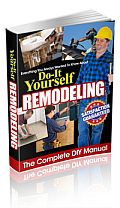Welcome to Walls Guide
Crown Molding Techniques To Raise The Value Of Your Home Article

Crown molding techniques to raise the value of your home
from:Your home should make value addition to your neighborhood. And that is possible only if you keep the exteriors as well as interiors look smart. Crown molding, though generally done on the ceiling, also involves itself with walls. You just need to be alert with the tools and the measurements. Also, if their use is hampering the relative gravity and strength of that portion, leave the whole thing. And do keep the kids away while doing it for security purposes
Tools
Chain saw, blade, sandpaper, nails, primers, duct tapes, screws, and miter box are important. You should keep them as well as a person handy. Whichever technique you use, you may need the tools very much. They should be in best of conditions; especially the cutters.
Steps
Measure the places you will crown-mold. Make additional but deficient cuts. Extra may be curtailed, but small sizes are of no help. If at all, there are small measurements done, use the duct tapes to cover up. Keep the gravity and relative strength of that area under concern. Cut crown molds with a fine blade. Also keep note of the corners where the molds will be most noticeable. Use primer prior and post of the molding. Make the edges unseemly.
Reverse process
This is making out splices and warps on the miter box reverse and then putting it back on the ceiling or wall to complement it. If you measure the corner splice to be erected at 50 degree, cut it on the inside of the miter box at 40 degree. Also, make the nails invisible. If they show up, the sight will not be great.
Straight process
This is done by using the baseboard and cutting the angle straight with the wall. Ceilings prefer the reverse angles, while walls get best with straight ones. Also the miter joints are best as they are less noticeable than butt joints. Yes, there will be joints and wide scope of them, as the house gets older. Use primer generously to hide the errors.
Mixed process
This is technical stuff. Keeping the pressure gradient and local temperature in mind, PVC, metal and fax mixtures are used for crown moldings. They allow for more sturdiness especially for wooden cases, doors, and windows. Also keep the gravity of the house in context. Keep the antipodes empty and never do crown moldings directly opposite to each other in hot weather.
You will need the plank to do the splicing and its installation comfortably. Otherwise doing it on the ceiling may be tricky. All builders have used crown moldings as a surefire way to plug the holes in the homes. On rain-screened homes, you will not need to do crown molding.



